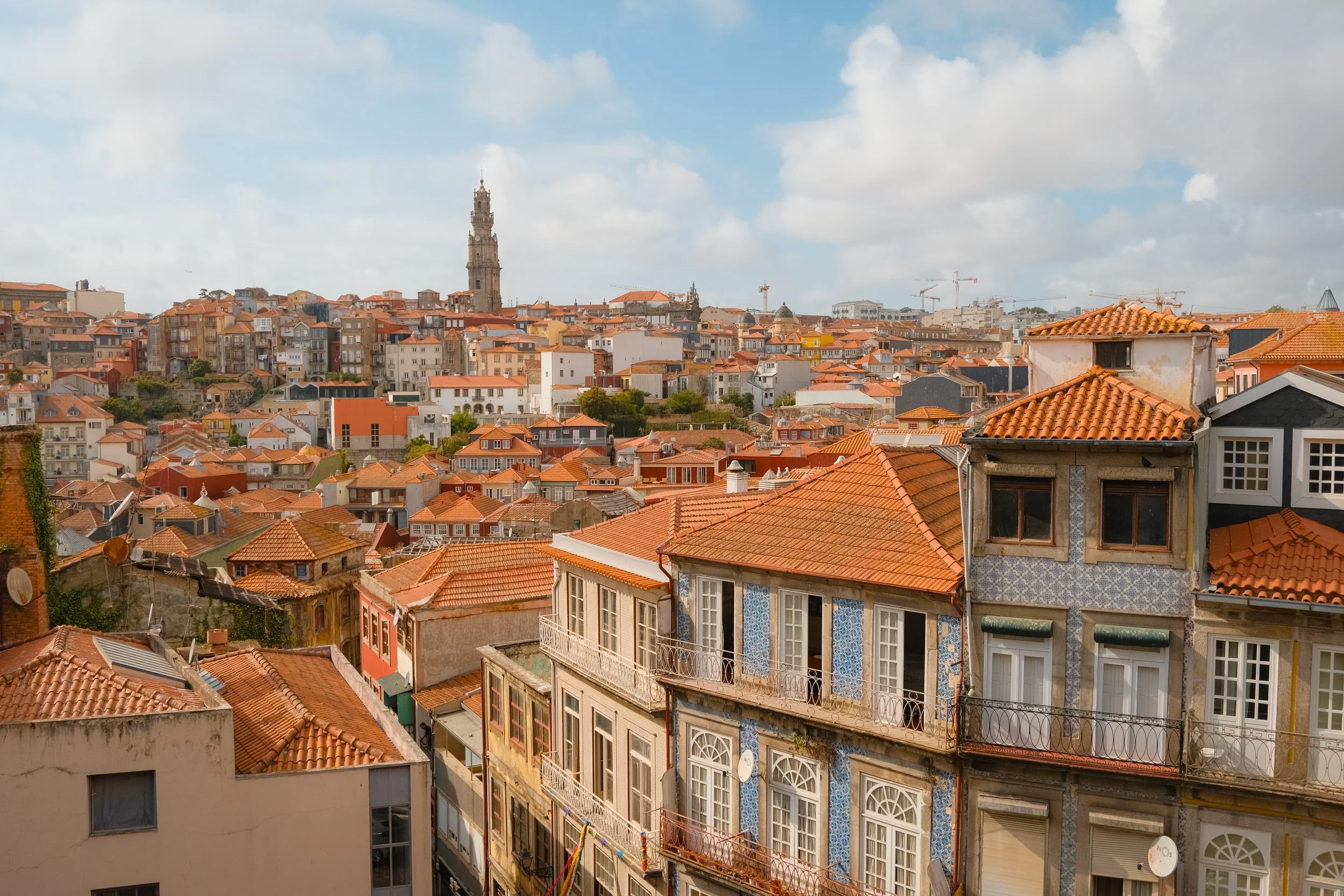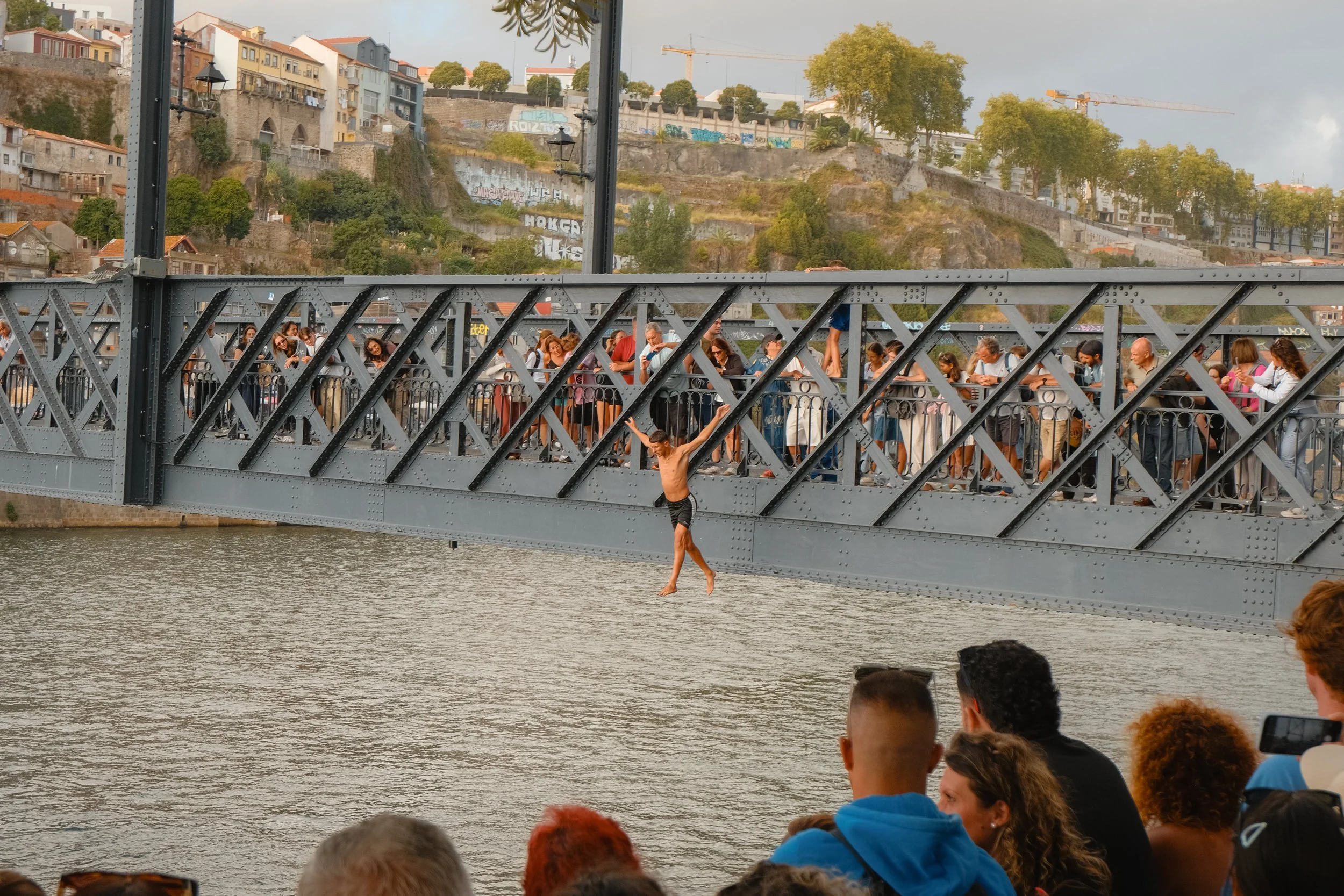New Beginnings in Porto
Hello from the beautiful city of Porto! Hanqing and I officially made it to the first country on our trip around the world. It’s been a long journey to get here, both literally and figuratively. Literally, we flew out of DC Monday night and had a 9 hour layover in Munich, which we spent wandering (sluggishly) around the city, before taking our connecting flight and landing in Porto late Tuesday night. By the end, we were running on four hours of sleep, two cortados, and mostly adrenaline.
Figuratively, this trip has been years in the making. We’ve daydreamed about traveling the world for as long as we can remember, and Hanqing’s been casually putting together the itinerary as a hobby for the past couple years. It took me a little longer to commit. The hardest part of the decision was that I was genuinely happy with my life in DC - my friends, my job, my comfy couch. Was I ready to take a career break and put parts of my life “on pause” for a year and a half? Ultimately, I realized that my future self would regret not taking this once-in-a-lifetime adventure far more than temporarily stepping away from my early career. And so, we packed up our apartment, said goodbye to family, friends, and coworkers, and set off.
I’m excited for this incredible privilege to explore the world and grateful for the opportunity to share some of it here through photos and writing. Thank you for following along!
A City of Blue & White
We woke up on Wednesday in beautiful Porto, a coastal city in northwest Portugal known for its stunning scenery and port wine. I came to Porto with very few expectations (which will be a recurring theme of this trip) and they were immediately surpassed.
The first thing I noticed when we walked out of our Airbnb was the architecture - magnificent, tiled facades around nearly every corner. After consulting Google, I learned that these blue & white tiles were called azulejos, derived from Arabic meaning “polished stone.” They became popular in the 16th century both for decoration and temperature control, and their blue-and-white patterns were inspired by Chinese porcelain - no wonder they looked so familiar.
If the architecture and language weren’t enough to remind us that we were no longer in the US, walking 15,000+ steps a day through winding cobblestone streets definitely did the job. Like many other older European cities we’ve been to, Porto’s layout is a stark departure from DC’s systematic street grid, but the compact size made it easy enough to navigate. Eventually, we ditched Google Maps and just wandered around the maze of streets, catching glimpses of the river or tiled churches down narrow alleyways. It was a good reminder of this trip’s theme: letting go of old routines and letting curiosity lead us to new experiences.
15,000 Steps A Day Through Porto
We spent two of our three days in Porto exploring the city on foot. One of our first stops was Mercado do Bolhão, an open air market with fresh produce, seafood & meat, wine tasting bars, cheese, artisan goods, and more. I loved that you could grab a glass of wine from one of the bars and wander around the market sipping while shopping. It took some serious self-restraint to not buy anything, as I’ve managed to squeeze my entire life into a carry-on suitcase & backpack and sadly have no space left for souvenirs.
We also stopped by and admired the architecture at Capela das Almas (Chapel of Souls), Porto Cathedral, and Igreja de Santo Ildefonso, each adorned with stunning azulejos. But the most impressive display was inside Estação de São Bento, the main train station, whose grand hall is covered with over 20,000 tiles depicting Portuguese history. I’ve always loved Union Station in DC, but São Bento might just take the crown as the most beautiful train station I’ve ever seen.
In between sights, Hanqing made sure we sampled as many pastéis de nata as possible. These traditional Portuguese custard tarts have a rich, creamy filling inside a crisp, flaky pastry shell, finished with a caramelized top. They reminded me of Hong Kong egg tarts, though those use a shortcrust pastry and don’t have that signature burnt sugar finish. I’m not usually a fan of egg tarts, but I liked the pastel de nata - it reminded me of crème brûlée. Of the three spots we tried, my favorite was Fábrica da Nata.
Speaking of food, Hanqing is a big fan of Anthony Bourdain’s, which means his mentality when traveling is to primarily eat what you can’t find anywhere else. Outside of pastel de nata, we sampled some other local specialties, including francesinha (a hearty croque monsieur-style sandwich stuffed with ham and steak, covered in melted cheese and tomato-beer sauce) and cachorrinho (a pressed mini hot dog sandwich with cheese and piri piri sauce). But my favorite by far was the bifana pork sandwich at Conga - it was juicy, garlicky, and full of flavor. Easily the best thing we ate all week.
After hours of meandering, we eventually found ourselves at the Douro River at the head of the Ponte de Dom Luís I. The Dom Luis I is one of six bridges that connect Porto and Vila Nova de Gaia, a separate city that sits directly opposite Porto on the south bank of the Douro river. This bridge has two distinct levels: the upper level is for pedestrians and the metro, and the lower level is for vehicles and pedestrians. We walked across the upper level from Porto to Gaia, which really pitted my desire to photograph the incredible panoramic city views from 60 meters up (~190ft) against my crippling fear of heights. I ended up capturing some great pictures of the skyline, but also scurried as quickly as I could to the other side in between shots. Needless to say, we walked across the lower level on the way back.
We came across a crowd at the start of the lower level of the bridge, and as we wove our way closer to the front, we saw a teenage boy dangling precariously onto the outside of the bridge. After an initial moment of shock, I realized he was wearing his bathing suit and I watched as he leapt forward and pencil-dove straight into the river, emerging to the surface a few seconds later. My later Googling revealed that jumping off this bridge is an age-old tradition in Porto, typically done by local kids to impress their crushes - go figure.
Port of Entry: The Douro Valley
On our second day, we joined a guided tour of the Douro Valley, Portugal’s port wine region. Like Champagne in France, only wine produced here can legally be called “port.” Strict regulation helps preserve its quality and authenticity, as we learned throughout the day.
Our tour included a two hour bus ride from Porto to the lush, terraced hillsides of the Douro Valley, a serene river cruise with sweeping vineyard views, a traditional Portuguese lunch, and wine tastings at two vineyards. At the first, we got a tour of the facilities and learned that port is made by adding a wine spirit (similar to brandy) just a few days into fermentation, a process that stops the conversion of sugar to alcohol earlier than with typical table wine. This fortification helps preserve more natural sugars, giving port both its sweetness and higher alcohol content (19–22% ABV). I usually prefer dry whites, but I came away with a much greater appreciation for port.
That’s all for now! If you made it this far, thank you. I can’t promise a set schedule for posts, but I’ll do my best to share updates along the way. Much like this adventure itself, I’ll figure it out as I go.
Talk soon,
Tanya











